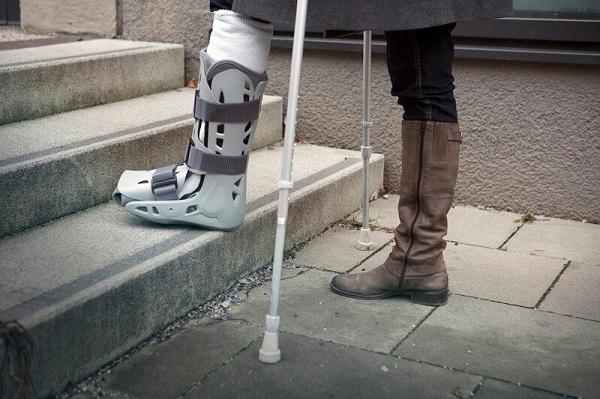If you’ve never been in a cast before, the prospect can be daunting. So many of us take it for granted that we can easily get up and walk about ten feet any direction in our own home. However, once you’re in a foot cast, even the most basic of tasks become insurmountably more difficult. Life takes more planning and patience, so if you’re already in a foot cast or about to be, then quickly review these top tips for getting around for the duration of your healing process.
- Prepare to be Tired
In DIYPS’s article on the subject, writer Dana Lewis expressed her surprise at just how tired she was while she was in a foot cast for a broken ankle. In regard to the fatigue, she felt that it was constant, not just due to the extra weight of the cast. The healing process alone seemed to drain her of energy, as her body worked to knit the bones back together.
Rather than improving, the fatigue only worsened as she was advised to start putting weight back on the affected leg. After months of atrophy, forcing the injured limb to work again is exhausting. Be sure to follow your orthopedic surgeon’s instructions, and don’t be tempted to push yourself too hard. In fact, Lewis suggests putting a temporary shower bench in your shower or tub to ensure you don’t exceed the weight-bearing limits set by your doctor.
- Identify Key Stations in your Home
The truth is that walking on crutches for a prolonged period of time isn’t as easy as it may look, especially if you’re already experiencing extreme fatigue. Lewis suggests building stations around your home to make necessities easier to reach without needing to trek across your entire house multiple times a day.
Think strategically about good waypoints where you can store medication, snacks, water, and other core supplies. Try to space them out evenly throughout your home and make all containers as accessible as possible, especially if you don’t have children or pets around who could be put at risk.
- Go All Out with your Crutches
Using crutches every day typically causes bruising, blisters, and a general achiness in the areas forced to absorb the majority of your body’s weight. In most cases, the underarms and palm of the hands are most affected. However, you may also experience back pain related to your posture.
To deal with these uncomfortable realities, Healthline suggests adding additional pillows and padding to the areas where your body comes into direct contact with your crutches. Cutting a small section of pool noodle in half reportedly does wonders, or you can purchase specialized padding. In addition, use a fanny pack or a hip bag to carry essentials to prevent uneven weight distribution. In the same vein, the writers at Healthline suggest making sure your crutches are always adjusted to the appropriate height, even if you’re just taking your shoes off for a few hours.
- Follow your Doctor’s Directions
To speed the healing process, it is imperative that you follow your doctor’s directions to the letter. Dartmouth-Hitchcock warns patients that they should never walk on a cast until it is completely dry. For a fiberglass cast, patients can expect to wait about an hour. For a plaster cast, patients should wait about three days before walking on it at all.
If you have any concerns, especially if you’re experiencing new sources of pain, strong scents, and/or discoloration in the affected area, then speak with your orthopedic surgeon. Dr. Stein’s expertise in the field will allow him to evaluate your situation and ensure you receive the appropriate care.

